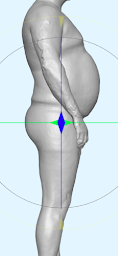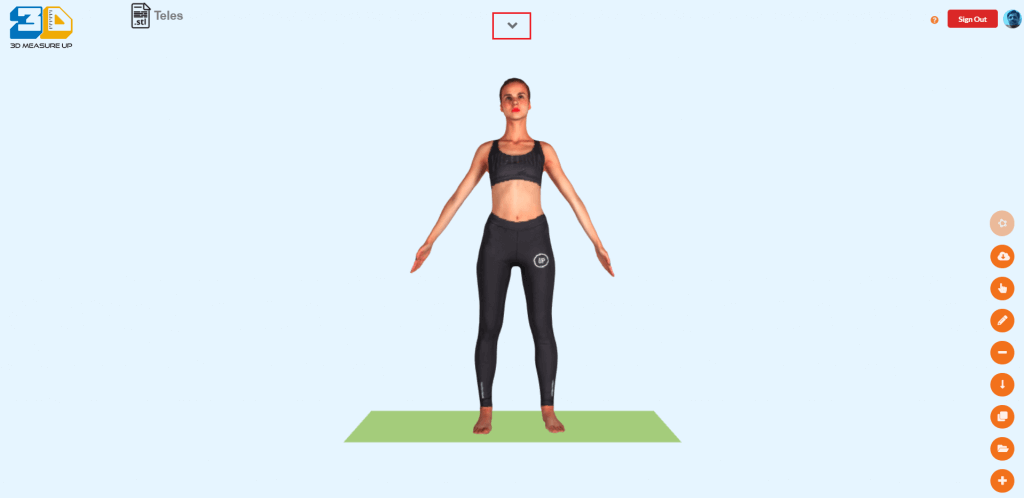Human body measurement from body scans of Plus-size/Obese persons: Challenges and Solutions
Overview
Contactless body measurement is the need of the hour. 3D Body Scanning is a noninvasive way to scan the human body quickly. Using 3D scanners, one can achieve accurate, precise, and reliable measurements. The human bodies are of many shapes and sizes. More than ⅔ rd of the US population is obese or overweight.[1] Scans of these people in any pose will result in a fused mesh at points where hands or legs touch the body.
This blog discusses the application of contactless measurements to extract measurements from 3D body scans of plus-size people, to construct comfort fit clothes.
Shapes of obese bodies
Plus-size bodies typically have the following shapes :
a) Pear-shaped bodies are bigger below the waist than above the waist.
b) Apple-shaped bodies are larger through the bust/chest and midriff as compared to the hips.
c) Potatoes like bodies are larger throughout the body and may have little or no waist definition.
d) There are also larger bodies whose figures are well proportioned with a well-defined waist and flat tummies, they are usually tall and big-boned.
Scan characteristics
Depending on the obese body shape the 3D scans may have the following characteristics :
a) Fused body parts
In such scans, there are two main areas where there is a major impact on mesh quality. The arms get fused with the torso. The fused mesh areas cause problems in the identification of armpit points and upper body features like Armpits, Waist, and hands, Hip and hands, Crotch, Thighs, Knees, Calves. In the lower body region, the meshes around the thigh region fuse with each other and adversely impact the identification of the crotch points and hence dependent measurements like inseams.

b) Posture
Most of the measurement extraction technologies have based their algorithms on assuming bodies of perfect and symmetrical proportions. There are plenty of more variations in postures viz. stooped posture, hollow back, slumped or rounded shoulders. The impact of posture is pronounced is plus-size bodies

c) Undistinguished or hidden features
Features like the armpits or waist are either hidden or can not be distinguished clearly due to skin folds or bulges on a plus-size body type. Features like the Bust points, Naval are displaced from the normal level and can affect corresponding measurements.


d) Body part axis and Alignment of Girths
Due to the excess mass distributed towards one side of the obese body, the axes of body parts are not aligned. For example, the lower leg axis may be different from the axis of the thigh.

Solution
3D Measure Up body measurement’s platform uses multiple ML models and sophisticated computer graphics algorithms to identify the body shape, body part axes, and key landmarks to produce accurate measurements. For measurements like the waist, multiple girth profiles are measured eg. Waist, Natural waist.


We identify the case of fused body features by using geometry algorithms. Once we identify these cases, the next challenge is to identify the boundaries of these fused parts. Using sophisticated ML techniques we identify the region of the body and get a context. After this, we locate the ‘pits’ in the mesh to finally get the boundaries. We then extrapolate these boundaries(‘Side Curve Computation’) to form a closed curve which approximately models to human body shape.

The axes of each significant body part are also identified by using ML algorithms. The circumferences and other measurements are aligned with the axis of the body part.
The image below shows the Thigh, Mid Thigh, and Knee is aligned with the axis joining the hip and knee. The Ankle, Minimum Leg Girth, Mid-calf, and calf are aligned with the axis joining the knee and the ankle.

Conclusion
This video demonstrates the automatic extraction of anthropometric measurements from 3D Body Scans that are misaligned or in a natural posture.
3D Measure Up enables researchers and practitioners in the apparel industry to accurately extract measurements from scans of obese, plus-size bodies and people of different body shapes to give accurate body measurements.
3D Measure Up also demonstrates ProtoTech’s ability to migrate desktop monolith applications to a serverless cloud SAAS platform on AWS and while doing so introduce the latest technologies like Machine Learning.
Author: Pankaj C.
Contact us:
3dmeasureup@prototechsolutions.com
3D Measure Up




